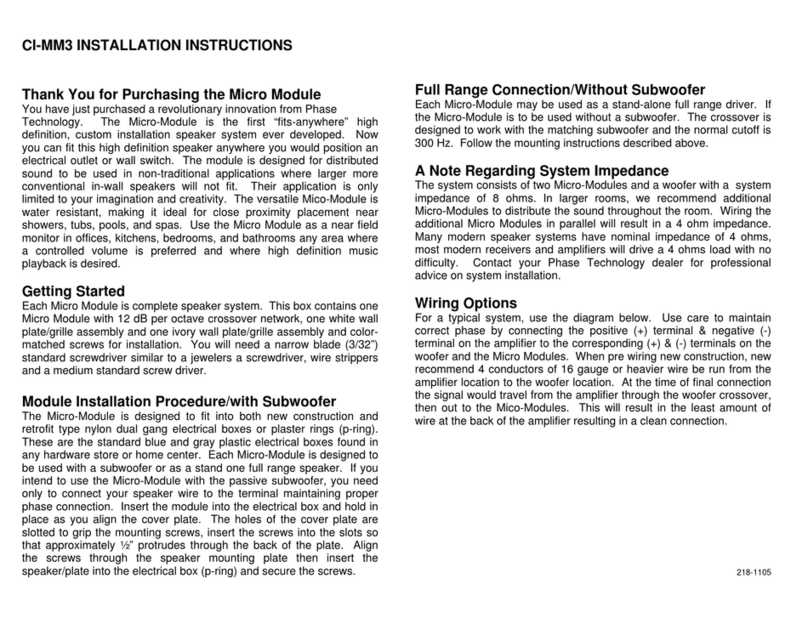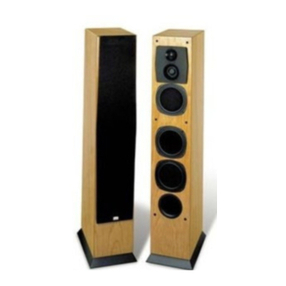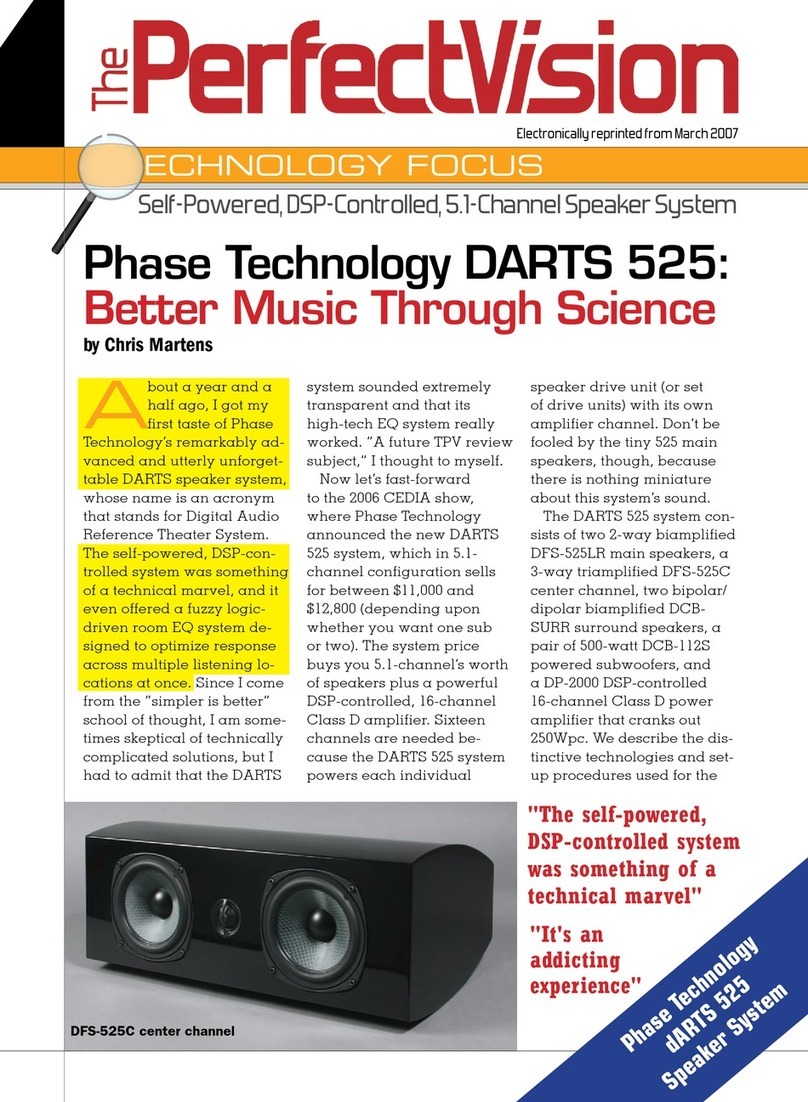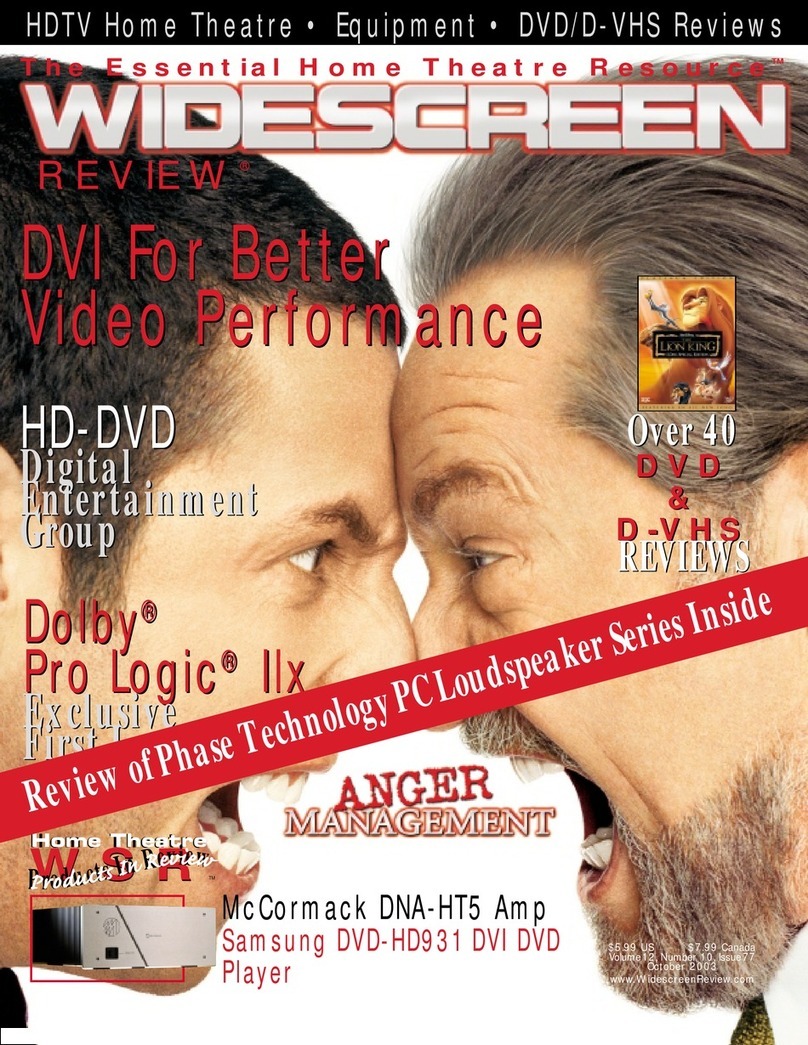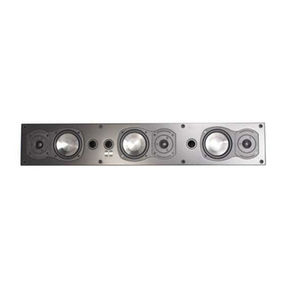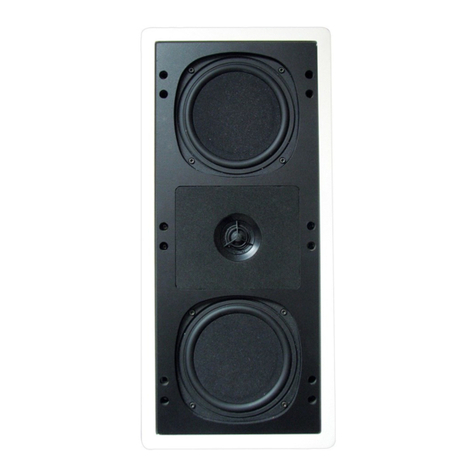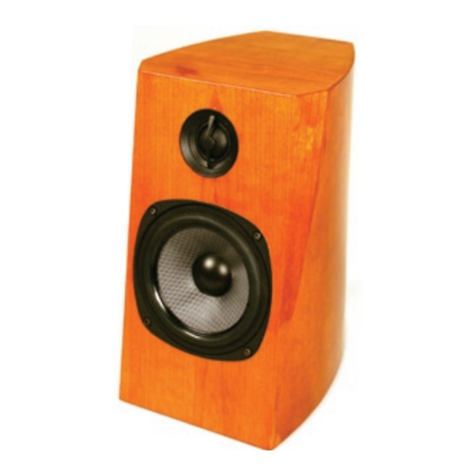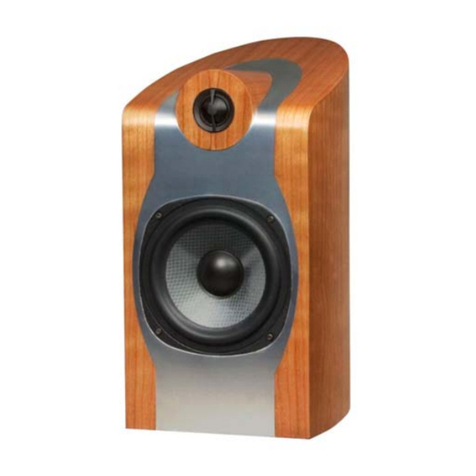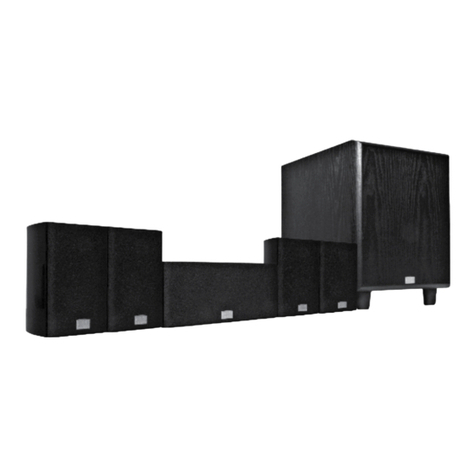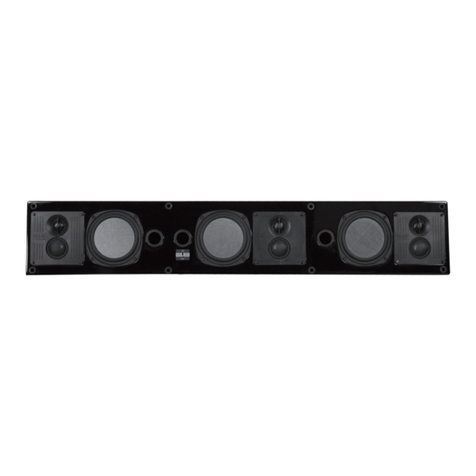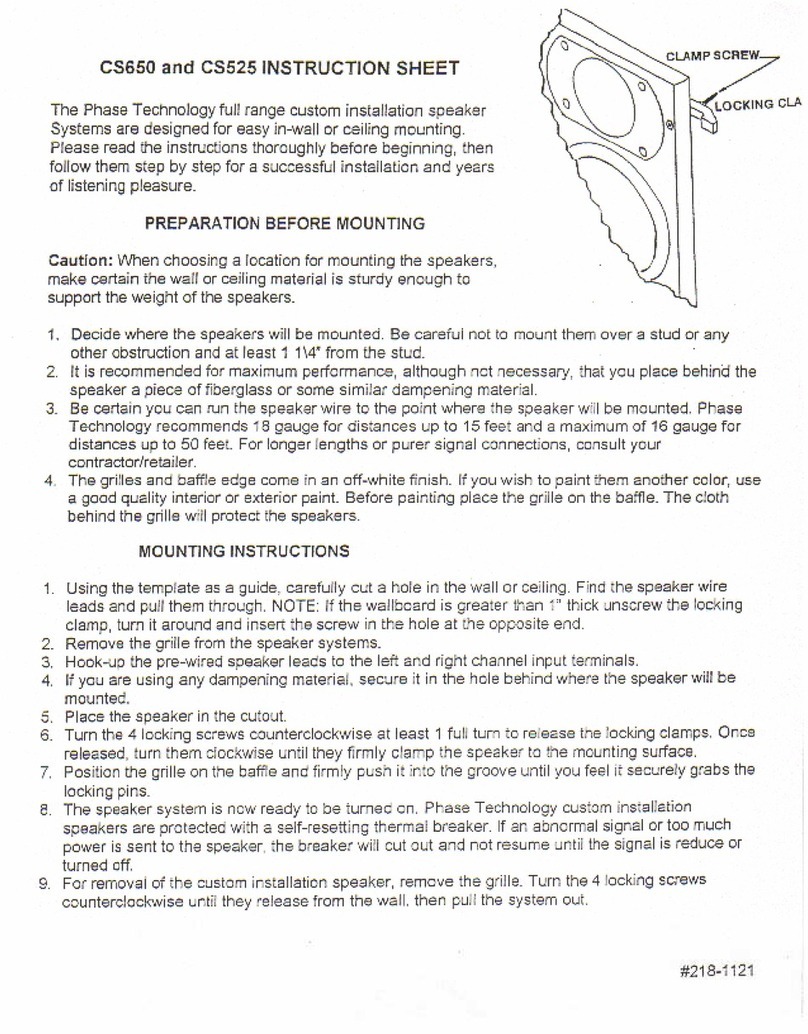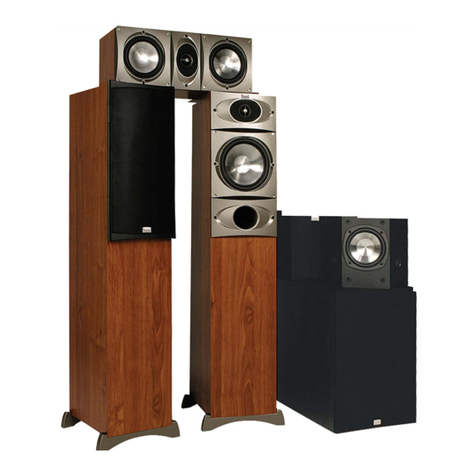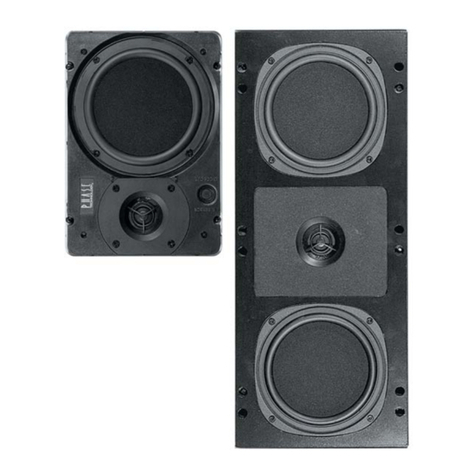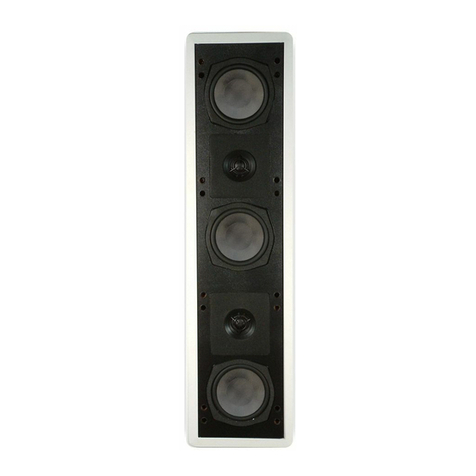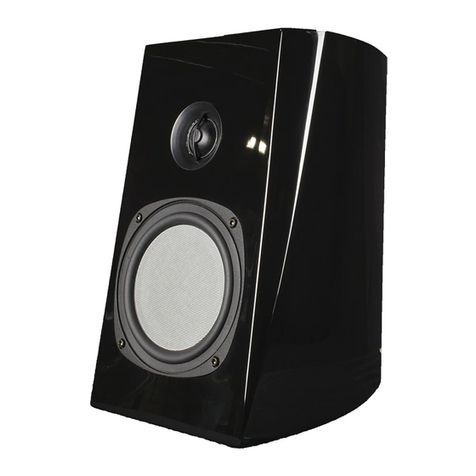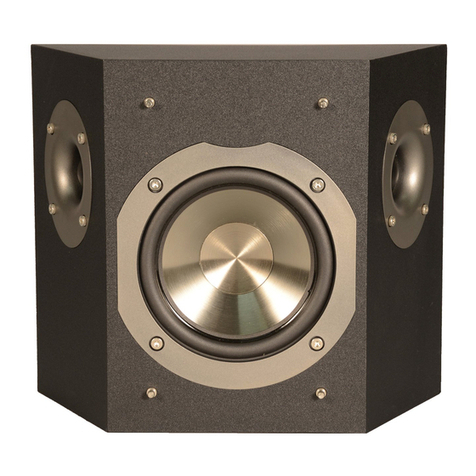
Excerpt from Stereophile.com
Phase Technology and Audyssey play dARTS! By Kalman Rubinson
August 15, 2005 — In this, it’s 50th year of company operations, Phase Technology announced and
demonstrated a new type of loudspeaker system. The series, named dARTS for Digital Audio Reference
Theater System, is obviously aimed at the custom-install, home-theater market, but the components and
concepts are applicable to music reproduction in any number of channels. As described by PT's director of
sales and marketing, Tony Weber, the dARTS system is (1) modular and (2) actively powered and equalized
by DSP, incorporating Audyssey's MultiEQ XT for digital room correction.
The modular speaker elements consist of a two-way main (DCB1.0-LR), a three-way center (DCB5.0-C), a
two-way dipole/bipole surround (DCB-SURR), and a subwoofer (DCB210-S) with 2 10" drivers and a 500W
BASH amplifier. All but the subwoofer are composed of various combinations of the same 6.5"
glass/honeycomb-cone woofer/midrange and 1" soft-dome tweeter. (The soft-dome tweeter, by the way, was
invented by PT's founder, Bill Hecht.) All speakers are being made available for custom (in-wall) installation,
for on-wall installation, or as freestanding cabinets and, in an effort to permit maximum flexibility, are identically
voiced, at the factory, so that the different versions can be mixed as needed.
This is accomplished via the DP-2000 digital amp/controller, which is factory-set for the specific speaker
system that it is shipped with, so that every element is completely balanced (±0.1%!) as well as phase- and
time-aligned with the others. The data are also stored at the factory, so that, in the event that a speaker or
driver is replaced, the DP-2000 can be updated to perfectly integrate the new element into the system. The
DP-2000 box is simplicity itself with 16 single-ended analog inputs and 16 D2Audio digital amps (each with on-
board DSP and memory, and capable of 125Wpc into 8ohms, 250Wpc into 4ohms), as well as an obligatory
USB jack for communication with the PC. The 16 channels of amplification permit the multi-amping of all the
speakers in a 7.1 or 7.2 system. (Remember the center is a three-way!)
After the dARTS system is physically installed in a listening/viewing location, the installer then finalizes the
system with a new and more flexible version of the Audyssey MultiEQ XT. Unlike prior appearances of this
system in home theater receivers, the measurement and programming is accomplished in a separate PC and
then downloaded into the DP-2000. The advantages of this include a more flexible user interface, the capacity
for more measurement locations in each room (up to 16), faster calculations, and easier software updates.
Unfortunately, this means that the measurement and programming is not user accessible, as PT places this in
the hands of custom installers. Still, the cost of the install kit is less than $500 and I can see a demand for it
from many hands-on users, especially since Audyssey suggests re-equalizing when any element in the system
or the listening room is changed. Otherwise, call your installer when you get new drapes.
The demo system was the custom-install black-box renditions, but prototypes of the snazzy freestanding units
were on display as well. Demos were mostly movies but the system was powerful and clean. As in past
Audyssey demos, Chris Kyriakakis provided several A/B comparisons, and the improvements wrought by
adding MultiEQ XT were apparent. Chris also pointed out that, since the system "knows" the capabilities of the
amps and the speakers, it is possible to run them to, but not beyond, their limits with security. Perhaps this
hotel ballroom had fewer and different characteristics than more familiar listening rooms or, as PT president
Ken Hecht suggested, the dARTS system comes from the factory better balanced and integrated than typical
systems. Nonetheless, the effect of MultiEQ XT was quantitatively less than I have experienced with more
modest systems.
Pricing for complete systems ranges from $14,500 (5.1) to $17,500 (7.2) with the user's choice of dipole/bipole
or direct-radiator surround speakers, all including the DP-2000 amp/controller. Clearly, the technology is
widely applicable and, I think, a harbinger of future domestically compatible sound systems with outstanding
performance.
